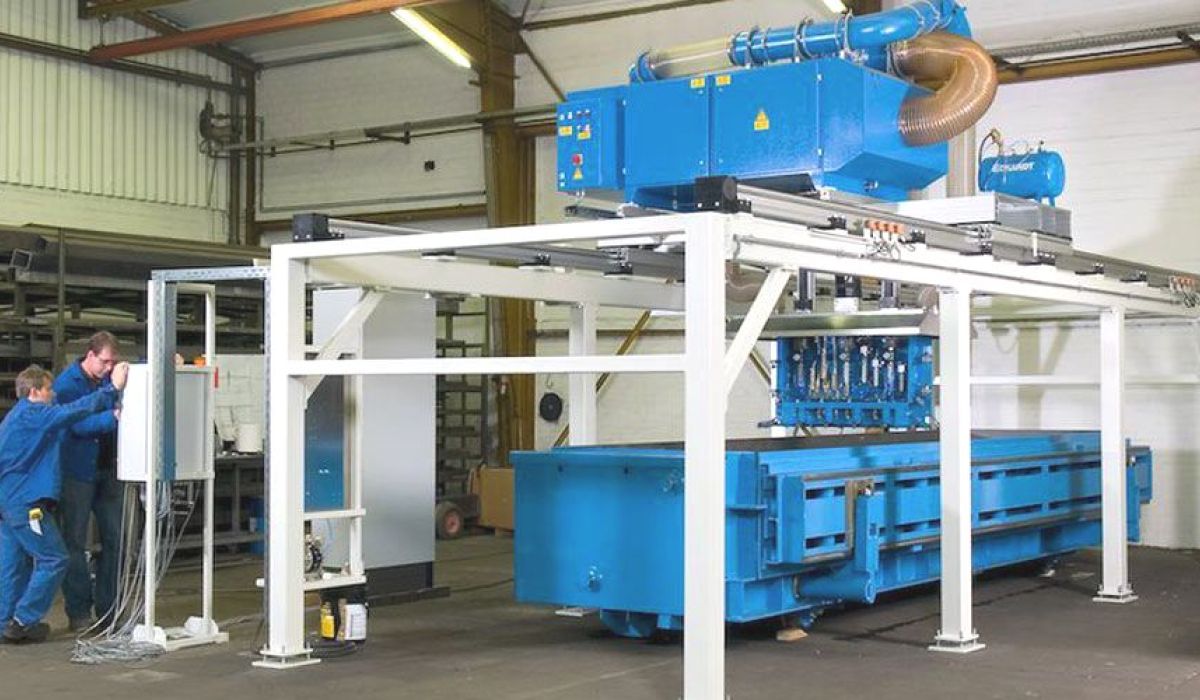In modern structural engineering building materials made of autoclaved aerated concrete (AAC) are very popular. The material is easy to work with and it is available in a great many different shapes and sizes for the blocks. Aerated concrete guarantees good protection against sound and provides excellent insulation qualities.
Together with its partner Hess AAC Systems, Münstermann has now developed a transport system and plant equipment which makes the production of autoclaved aerated concrete more efficient and more economic.
Münstermann's actual plant sections
The whole plant for Hess AAC Systems was designed and developed with the co-operation of Münstermann. Münstermann’s main task was the design, development and production of the handling and mould oiling systems of the production section. This system includes the mould oiling unit, the handling system with temporary storage tracks including transfer cars for the loading and unloading of the autoclaves and the reaction area, the cleaning station including the extraction system and the conveyor for the return of the platforms used for curing. The control system of the oiling unit was so designed that this fitted simply into the Hess AAC System overall production line control system.
Advantages of the newly-developed system
The design and development of the transporting equipment posed a number of challenges to the designers. A successful result was only possible by producing novel handling concepts or completely newly designed components.
The characteristic features in detail:
Great importance was attached to the design and development of an efficient handling of the trolleys. For the first time friction wheels have been used which can be employed in temperatures of up to 160ºC. The implementation of friction wheels makes it possible to close the gaps on the storage tracks and this includes using individual trolleys or the whole train of trolleys.
The transfer cars were specially designed and developed for this project and could be optimally aligned with the production process. One of the transfer cars was, for example, fitted with a very fast drive system to guarantee a high cycle time. The protection of the transfer cars ensues from laser scanners so that any person in the vicinity of the platform is not endangered.
Under the casting unit is a high degree of pollution. For the transportation of the casting moulds special round steel chain conveyors are in operation, which are highly resistant to dirt and guarantee reliable functionality.
The cleaning section (see Figure 4) for the casts consists of three cleaning steps in the plant in which there are no interruptions in the cycle time:
- An endless screw removes the rough dirt
- A plastic scraper removes the remaining loose dirt
- A rotating brush takes on the final cleaning of the moulds
The production process is thereby uninterrupted by this activity.
Optimised solutions are produced
The project described here in this article shows that customer-specific ideas and specially optimised solutions help to improve production processes and make these more efficient. In addition, the cooperation between the partners responsible for the development is of particular importance. Complex solutions can only be worked out together. For this reason, for example, the lubrication unit was adjusted for the later production runs together with the workers from Hess AAC Systems during the trial run. The resulting solution was adapted to the very special requirements on hand.

